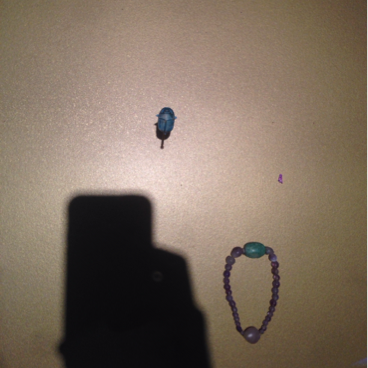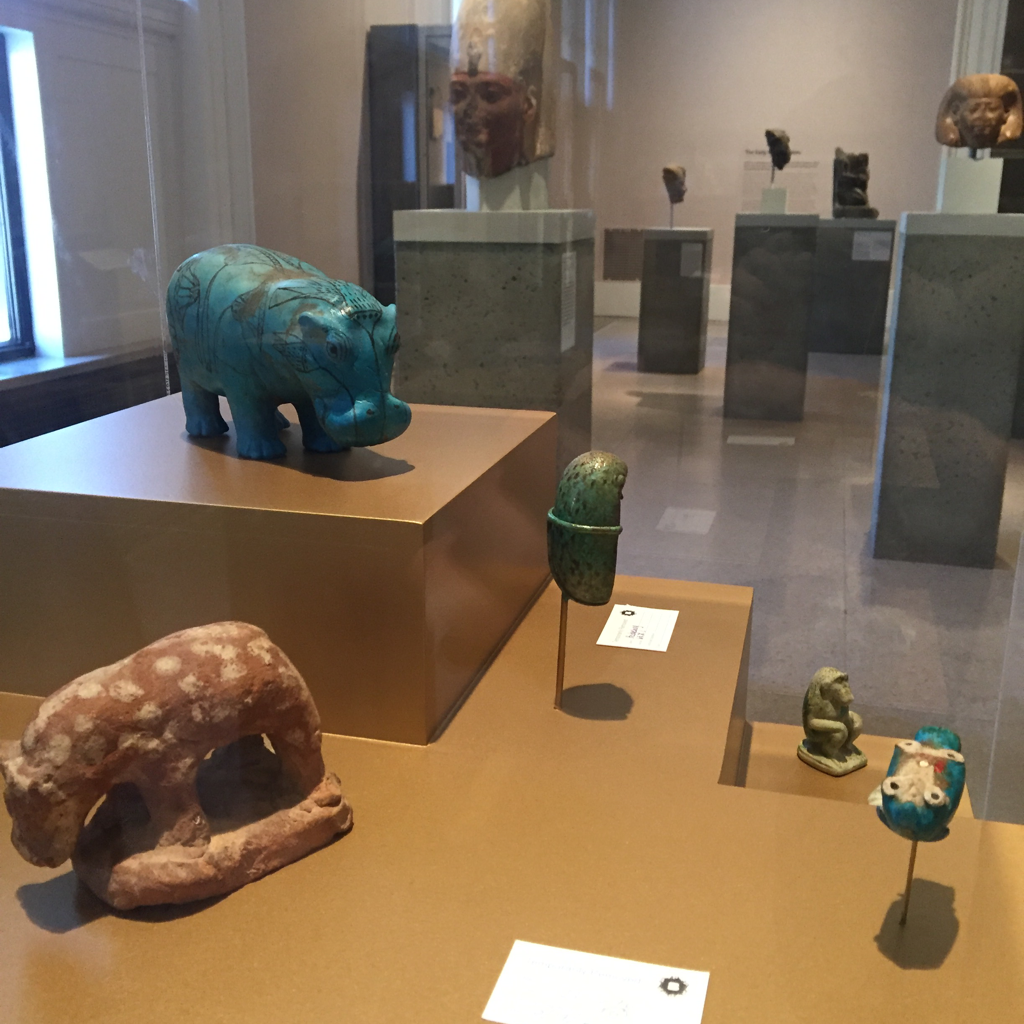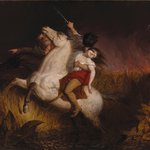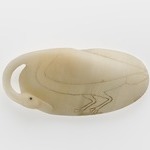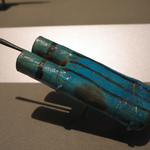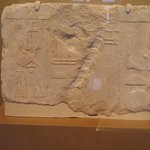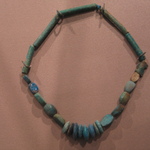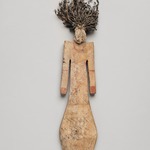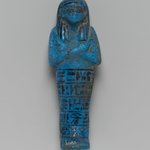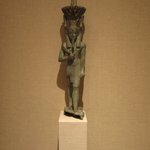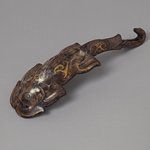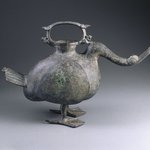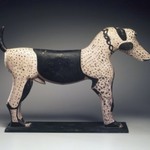

Standing Hippopotamus, ca. 1938–1539 B.C.E. Faience, 4 1/4 x 6 9/16 in. (10.8 x 16.7 cm). Anonymous loan, L48.7.19. Creative Commons-BY (Photo: Brooklyn Museum, L48.7.19_transp5519.jpg)

Standing Hippopotamus, ca. 1938–1539 B.C.E. Faience, 4 1/4 x 6 9/16 in. (10.8 x 16.7 cm). Anonymous loan, L48.7.19. Creative Commons-BY (Photo: , L48.7.19_SL3.jpg)
Standing Hippopotamus
Egyptian, Classical, Ancient Near Eastern Art
On View: Old Kingdom to 18th Dynasty, Egyptian Galleries, 3rd Floor
Egyptian artists decorated statuettes of hippos with images of Nile flora and fauna. Common motifs included lotus buds, flowers, marsh grass, lily pads, frogs, waterfowl, and insects. The legs of most statuettes were broken just before burial to ensure that they posed no threat to the tomb owner. Museum conservators restored the legs of many examples, including this one, to show how the statuettes looked when they were made.
MEDIUM
Faience
DATES
ca. 1938–1539 B.C.E.
DYNASTY
Dynasty 12 to Dynasty 17
PERIOD
Middle Kingdom to Second Intermediate Period
DIMENSIONS
4 1/4 x 6 9/16 in. (10.8 x 16.7 cm) (show scale)



COLLECTIONS
Egyptian, Classical, Ancient Near Eastern Art
ACCESSION NUMBER
L48.7.19
CREDIT LINE
Anonymous loan
EXHIBITIONS
MUSEUM LOCATION
This item is on view in Old Kingdom to 18th Dynasty, Egyptian Galleries, 3rd Floor
CAPTION
Standing Hippopotamus, ca. 1938–1539 B.C.E. Faience, 4 1/4 x 6 9/16 in. (10.8 x 16.7 cm). Anonymous loan, L48.7.19. Creative Commons-BY (Photo: Brooklyn Museum, L48.7.19_transp5519.jpg)
IMAGE
overall, L48.7.19_transp5519.jpg. Brooklyn Museum photograph
"CUR" at the beginning of an image file name means that the image was created by a curatorial staff member. These study images may be digital point-and-shoot photographs, when we don\'t yet have high-quality studio photography, or they may be scans of older negatives, slides, or photographic prints, providing historical documentation of the object.
RIGHTS STATEMENT
Creative Commons-BY
You may download and use Brooklyn Museum images of this three-dimensional work in accordance with a Creative Commons license. Fair use, as understood under the United States Copyright Act, may also apply.
Please include caption information from this page and credit the Brooklyn Museum. If you need a high resolution file, please fill out our online application form (charges apply).
For further information about copyright, we recommend resources at the United States Library of Congress, Cornell University, Copyright and Cultural Institutions: Guidelines for U.S. Libraries, Archives, and Museums, and Copyright Watch.
For more information about the Museum's rights project, including how rights types are assigned, please see our blog posts on copyright.
If you have any information regarding this work and rights to it, please contact copyright@brooklynmuseum.org.
RECORD COMPLETENESS
Not every record you will find here is complete. More information is available for some works than for others, and some entries have been updated more recently. Records are frequently reviewed and revised, and we welcome any additional information you might have.





